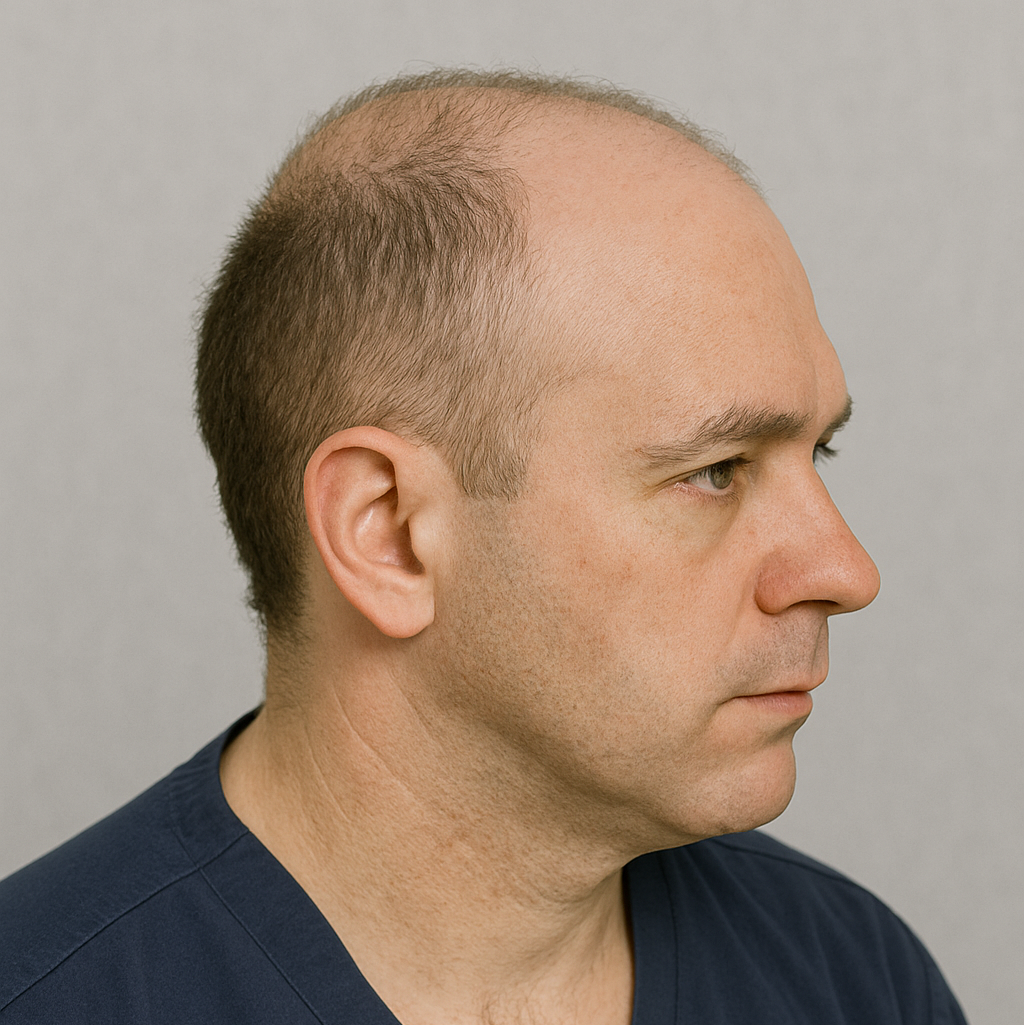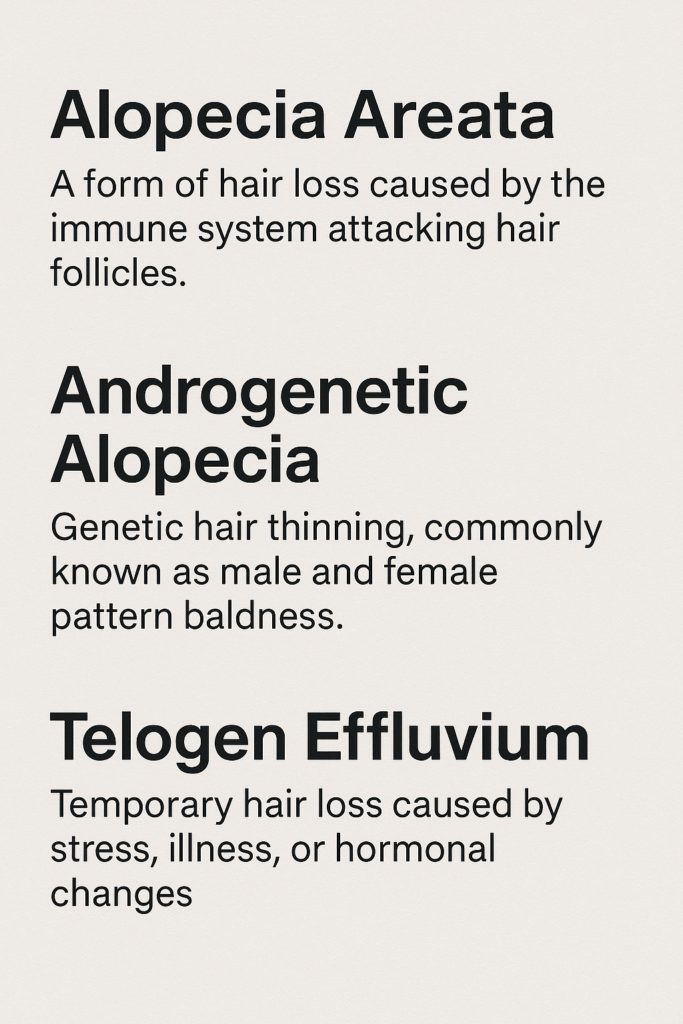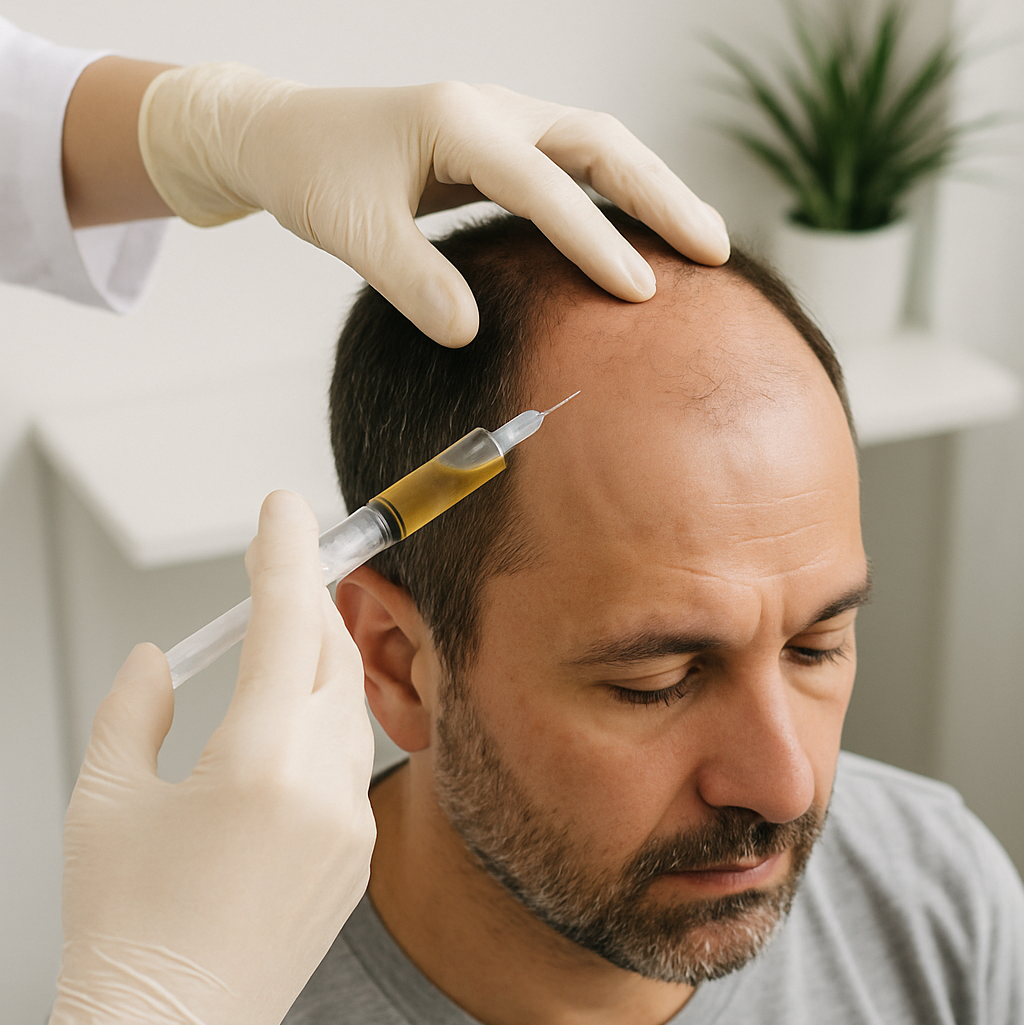Struggling with sudden or patchy hair loss and wondering can alopecia be reversed? Alopecia, an autoimmune condition that causes hair to fall out in small patches, can feel overwhelming—but treatment options exist.
Depending on the type and severity, alopecia may be reversible with early intervention, medical therapies, or lifestyle adjustments.

Understanding your condition empowers you to explore solutions like corticosteroids, JAK inhibitors, or PRP therapy.
Backed by expert insight and science-based care, this guide helps you regain control and take steps toward potential hair regrowth.
Can Alopecia Be Reversed?
Alopecia, often characterized by thinning or bald patches, affects millions worldwide. While it might not be “cured” in every case, there are various treatments available to help restore hair or slow its loss. In this section, we’ll discuss common types of alopecia and the treatments that can help.
Types of Alopecia
- Alopecia Areata: A form of hair loss caused by the immune system attacking hair follicles.
- Androgenetic Alopecia: Genetic hair thinning, commonly known as male and female pattern baldness.
- Telogen Effluvium: Temporary hair loss caused by stress, illness, or hormonal changes.

Treatments for Alopecia
While no single treatment works for everyone, non-surgical and surgical options can address various causes of alopecia.
Treatment Options for Alopecia
Follicular Unit Extraction (FUE)
FUE is a minimally invasive, state-of-the-art hair transplant technique used to treat severe hair loss caused by androgenetic alopecia or other types of alopecia. The procedure involves extracting individual hair follicles and transplanting them to thinning areas.
Benefits and Considerations:
- Benefits: Minimal scarring, faster recovery, natural-looking results.
- Considerations: Requires multiple sessions for large areas; results may vary based on individual factors.
Procedure Steps and Recovery Timeline:
- Consultation and Evaluation: Dr. Rana Irfan assesses the patient’s hair loss and creates a customized treatment plan.
- Extraction: Healthy follicles are carefully harvested from a donor area (usually the back of the head).
- Transplantation: The follicles are transplanted into the thinning areas.
- Recovery: Most patients experience initial shedding within the first few weeks, followed by new hair growth. Recovery typically takes 6–12 months for full results.
Expected Outcomes:
Hair growth varies per individual. While the majority of patients experience significant regrowth, it’s essential to set realistic expectations based on the type and extent of alopecia.
General Pricing Guidance:
The cost of FUE treatment can vary depending on factors like graft count and the extent of alopecia. A consultation with Dr. Rana Irfan will provide personalized pricing information.
Platelet-Rich Plasma (PRP) Therapy
PRP therapy involves injecting the patient’s plasma (rich in growth factors) into the scalp to stimulate hair growth. It is a non-surgical solution suitable for individuals with mild to moderate alopecia.
Benefits:
- Natural hair restoration
- Non-invasive with minimal downtime
Considerations:
- Multiple sessions required
- Best suited for individuals with early-stage alopecia or thinning hair

Why Choose Dr. Rana Irfan for Alopecia Treatment?
Dr. Rana Irfan is a highly experienced hair restoration surgeon with board certifications from ABHRS and ISHRS, ensuring that patients receive expert care backed by the latest, most advanced techniques in hair restoration. Dr. Irfan’s clinic in Islamabad provides personalized, compassionate care, focusing on individual results.
- Cutting-edge techniques: FUE, FUT, PRP, and other advanced hair restoration procedures.
- Board-certified expertise: Dr. Irfan’s qualifications assure that the procedures performed are safe and effective.
Local and International Relevance
Located in the heart of Islamabad, Dr. Rana Irfan’s clinic is easily accessible to patients from all over Pakistan and beyond. For international patients, medical tourism to Islamabad for alopecia treatment is an increasingly popular option, offering high-quality care at affordable prices compared to other regions.
Links Suggestions:
FAQ’S Section
Can hair grow back after alopecia?
Yes, in many cases, hair can grow back after alopecia, especially if the underlying cause is identified early and treated. Conditions like alopecia areata may resolve on their own or respond well to treatments like PRP therapy, medications, or FUE hair transplant,t depending on severity.
Can alopecia be cured permanently?
While alopecia cannot always be permanently cured, many treatments, including FUE hair transplants and PRP therapy, can significantly improve hair growth and prevent further hair loss.
What is the fastest way to cure alopecia?
The fastest way to manage alopecia depends on the type and severity of hair loss. Options like PRP therapy may offer quicker results for certain types, while FUE hair transplants provide long-term solutions, though recovery takes longer.
How long does it take for hair to grow back after alopecia treatment?
Hair growth typically begins 3 to 6 months after FUE hair restoration. Full results can take up to a year to fully manifest.
